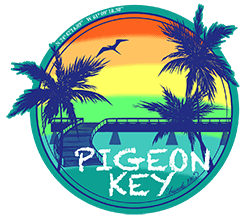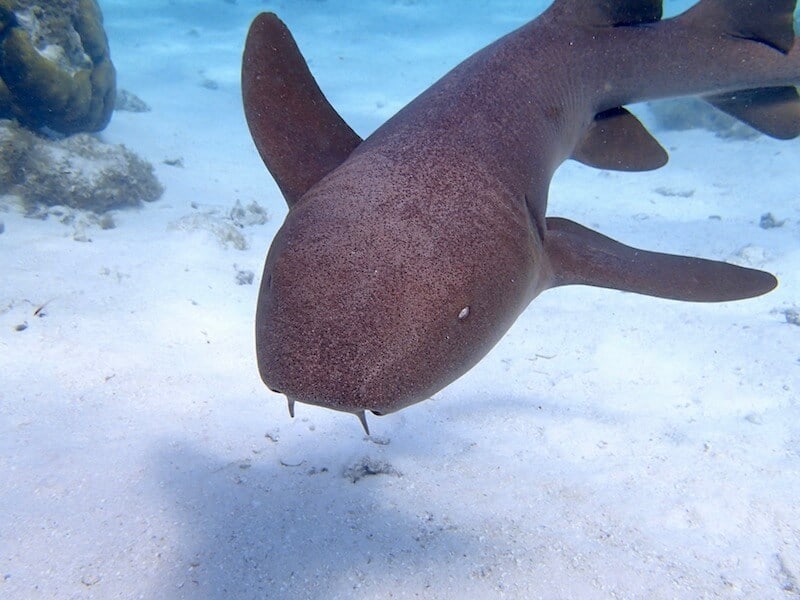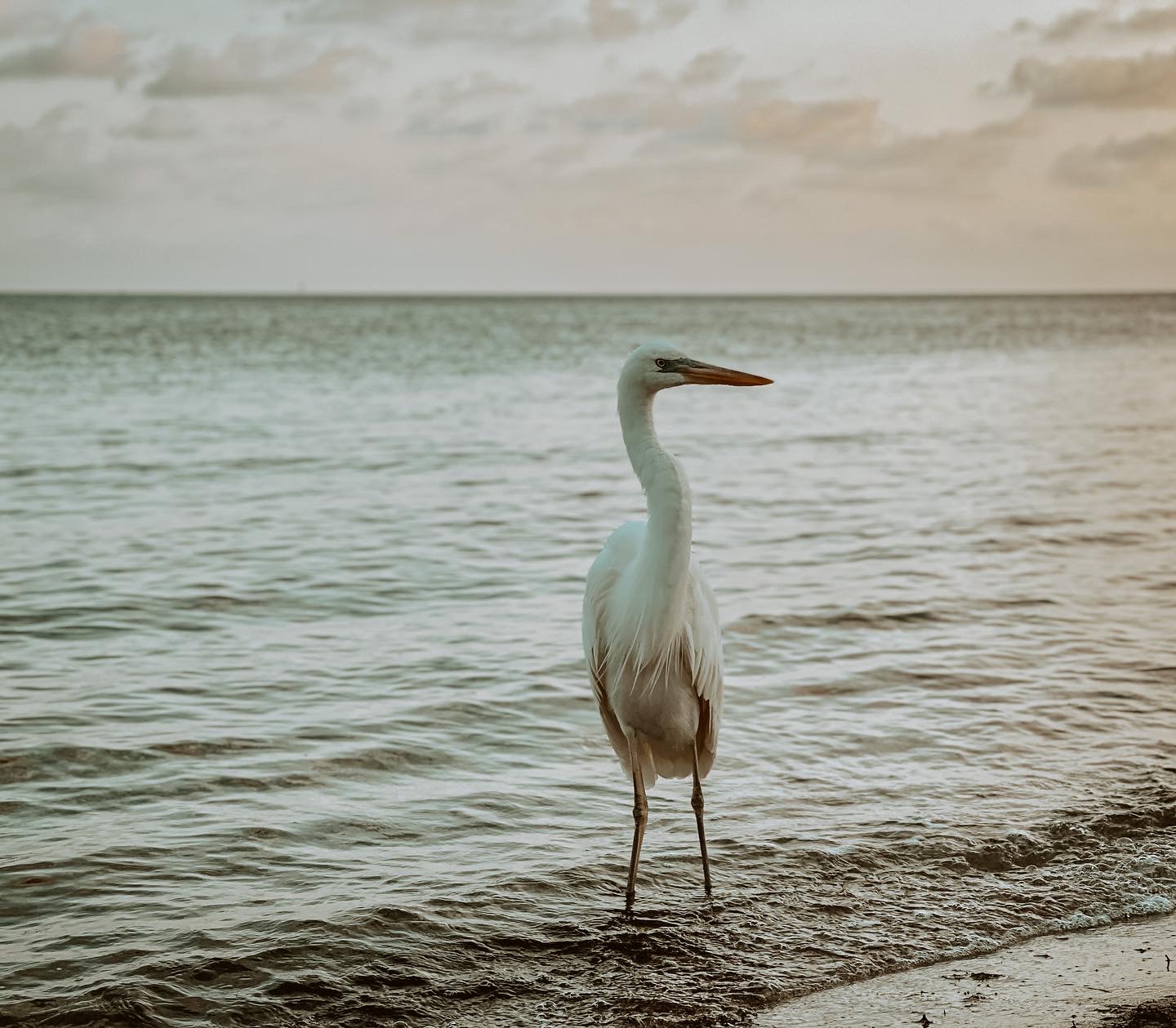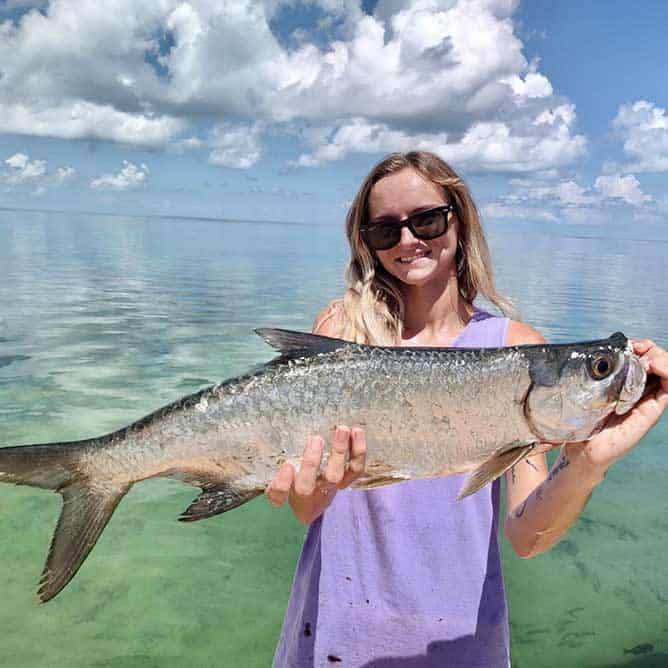If you’ve visited Pigeon Key before, you’ve probaby noticed we have a few resident Nurse Sharks in our saltwater pool. The nurse shark (Ginglymostoma cirratum) is one of many species of sharks we see in our waters in the Florida Keys. They are typically medium-sized, with mature adults ranging from 7 to 9 feet in length, although some can reach up to 14 feet in length. One of their most striking features is their barbels, sensory organs resembling whiskers, located on the snout. These barbels are used to help detect prey hidden in the sand. Instead of scales like most fish have, sharks have a more hydrodynamic skin made up of dermal denticles, meaning “skin-teeth”, that feels like sandpaper. They, like other sharks, also have a special adaptation for hunting. Nurse sharks have little electroreceptors along their nose called Ampullae of Lorenzini. They look like little black dots if you ever get a chance to see them up close! These ampullae help them detect electric fields generated by their prey, so if they can’t see or hear their prey, they can still “sense” them. Another highly interesting fact is that unlike most other species of sharks, nurse sharks don’t need to be constantly swimming in order to pass water over their gills to breathe. They are known as buccal pumpers because they can rest on the ocean floor and pump water through their mouth to pass over their gills to breathe. Skates and rays are also buccal pumpers.
Their feeding style has earned them the name “nurse” due to the sucking sounds they make when feeding, which can sound like a nursing baby! Nurse sharks usually have a yellow-brown coloration to them, and have wide pectoral fins, along with two distinctive dorsal fins. They have an inferior-style mouth, hinting at their bottom-dwelling nature and feeding habits. Nurse sharks are primarily nocturnal predators. They feed on a diet consisting mainly of crustaceans, mollusks, and small fish they find along the ocean floor. They’ll even eat some spiny lobster! They have smaller teeth than other sharks, and they use these to break through any hard shells their prey may have.
Nurse sharks are found in warm, tropical and subtropical waters throughout the Atlantic, eastern Pacific, and the Gulf of Mexico. They prefer shallow coastal areas, such as coral reefs and seagrass beds, and can often be seen resting on the ocean floor during the day. Around Pigeon Key, we often see them resting or swimming around the shallow hardbottom, and can occasionally see them off of our dock! However, nurse sharks are capable of venturing into deeper waters, and they are known to partake in seasonal migrations.
Nurse sharks have a fascinating reproductive strategy. They are ovoviviparous, meaning that fertilized eggs develop inside the mother’s body. After a gestation period of about five to six months, female nurse sharks give birth to live pups. A typical litter size can range from 20 to 40 pups, each measuring about 12 to 14 inches at birth. Male nurse sharks become fully mature in 10-15 years, whereas females become mature in around 15-20 years.
Despite their unique characteristics and behaviors, nurse sharks face various threats in the wild. These include habitat destruction (whether it be from development or natural disasters, like storms and hurricanes), overfishing, and accidental bycatch in fishing gear. Additionally, their slow reproductive rate makes them particularly vulnerable to overexploitation and population decline.
Pigeon Key offers the chance to feed our two nurse sharks in our saltwater pool with the 1 PM tour, seven days a week! Our summer campers and student groups also get to feed them as part of their Shark Biology program, where they learn all about the various sharks we see in the Florida Keys, and also get to participate in a shark dissection! Next time you come visit Pigeon Key, be sure to stop over at our saltwater pool for a chance to see these beautiful sharks!




